
ORDINARY working types smoked Turf or Craven A cork tips, but for the Brylcreem boys and other flash Harrys it was Senior Service. They had proper filters, you see, and if you think this unimportant, the reality was 60 percent of Australian men were on the darts.
The missus was at home where a Bex powder and a good lie down was a ritual, which they later found out led to kidney failure. There was no Maccas, at least none you could eat, but say it out loud and plenty of blokes would answer to it.
This article was originally published in the November 2016 edition of Wheels, and is being republished on the fourth anniversary of Ford Australia ceasing manufacturing in Australia.
Not many homes had “the phone on”. Only rich people watched grainy black-and-white TV because you needed a bookie’s bag full of tenners to buy one. An AWA or Kriesler valve wireless adorned the mantelpiece at home but all the ABC announcers sounded like plumb-in-the-mouth Poms, talking about Bob Menzies and the credit squeeze. It wouldn’t be long before Ferris replaced valves with transistors in their top of the line AM-only car radios. If you had a radio…
Indeed, if you were lucky enough to have a car… it was a Holden or it was British – Velox, Prefect, Snipe, Minor, Anglia, Zephyr.

Into this world Ford launched the first Australian-made Falcon on September 11, 1960, a portentous date for disasters. Fast-forward to 2016, and with the Falcon’s last rites imminent, we find ourselves sitting behind the giant, thin-rimmed steering wheel of the first of the breed, a lovingly restored 1960 XK, in search of a lost highway and a map that tells of relentless progress. Travelling in convoy, a current Falcon G6E bookends a half-century of unbroken DNA no Holden can claim.
Back at the beginning, only horse-racing people and fast entertainment types drove American Customlines, while odd continentals had those strange Volkswagens. Men wore fedoras; ladies donned hats and gloves to go out. Teens lusted after the portable Transistor 6. They called it a tranny and it meant something very different then.
Road food was from Greek milk bars owned by New Australians named Con. Mixed grill including lambs fry washed down with a cup of Bushells tea, or a milkshake served in an aluminium canister, at the Parthenon or the Paragon or the Niagara. Not many Aussies drank coffee. Some of the migrants brewed it up, black as tar. But they were a Weird Mob, obsessed with a round-ball game where headbutting the thing was okay. But gee, could those blokes lay concrete! Locals might have a tin of International Roast to serve with the Iced Vo-Vos, while they were entertaining the local minister in The Good Room.
Wine wasn’t even in casks yet, but sherry came in flagons. Blokes drank beer, or the playboy types might order rum and cloves on a cold night.
The Dunny Man was ubiquitous. As Clive James described him – “he of the suspicious, deeply tanned forearms” – would hoist cans of ‘night soil’ (that’s what they called it) onto his truck in the small hours because 60 percent of Australian homes were still unsewered.
The Hume, or Highway 31 as it was called, was punishing, a mostly single-carriageway accumulation of old wagon tracks, mixed surfaces and badly aligned curves that followed the topography and went through towns you’ve never heard of: Yanderra, Breadalbane, Jugiong, Collector, Towrang and the appropriately named Bookham. If the coppers didn’t get you, the trucks on Sylvias Gap might. Your chances of dying between Sydney and the border at Albury were exactly 15.2 times greater than they are today.
This was the road, with all its lumps, bumps, expansion joints, off-camber blind bends, one-lane bridges and cracked concrete, that shaped the character of Australian cars.
While the outback red dirt was the mystique, the Hume was the reality. This was our Road Most Travelled and it dictated a standard of ride, handling and steering so foreign to arrow-straight American freeways. And toughness and durability not required on The Continent. This road shaped our national motoring character, but it was such a bastard it could never be as glamorous as Route 66.
Travelling from Sydney to Melbourne along The Deadly Hume, as the tabloids called it, could take 13 hours – at least – with stops at the Golden Fleece for motor spirit and a quart or two of oil. A de-coke had nothing to do with rehab or cola.
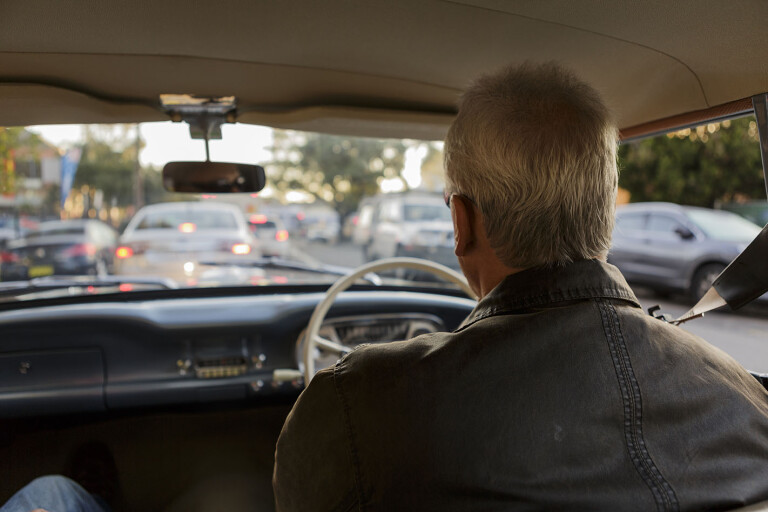
AFTER a flying start, absent of any testing in local conditions, things didn’t go well for the US-designed XK Falcon. On roads like the Hume, which was arguably Australia’s premier bit of pavement, the American car’s underpinnings couldn’t cope with the punishment. On lesser roads, the front-end began to fail and the clutches couldn’t cope.
It shouldn’t have been a surprise because Ford, like the Brits before them, hadn’t learned that Australian development was essential to survival.
Such was the blinkered, imperial attitude that the shiny new factory at Broadmeadows, built to produce the Falcon, had a roof pitched to cope with the snow of Michigan winters.
Today, neither the Falcon nor Australia, nor for that matter the Hume, bear much resemblance to 1960. But together they chart a 56-year journey as the nation grew up, and grew out of the cars and the way of life that has shaped us since World War II.
Just south of Bargo is a pristine section of old 31, a time capsule. It dips and dives under and over the main rail route near Yerrinbool with bridges perched on blind 90-degree, downhill bends and buttressed brick underpasses hiding sharp deviations. Left or right?
Go on, guess.
No wonder the truckies came to grief here.
It meanders under the new Hume Freeway at one point. To pause there and listen to the soundtrack is instructive. At ground level, the only noise is the XK’s slurred upshifts (count ’em, there are only two) and honest exhaust timbre, chugging past the orchards and the abandoned general store. Above, on the multi-lane freeway, the whirr and pitched whine of high-speed rubber on road, the roaring of wind being cleaved by metal, the whistle of 18-wheelers with their turbos spinning, mums and dads in the family SUV with the air on and the music playing. Insulated, cossetted, safe and comfortable with boredom the greatest challenge.
Such is progress.
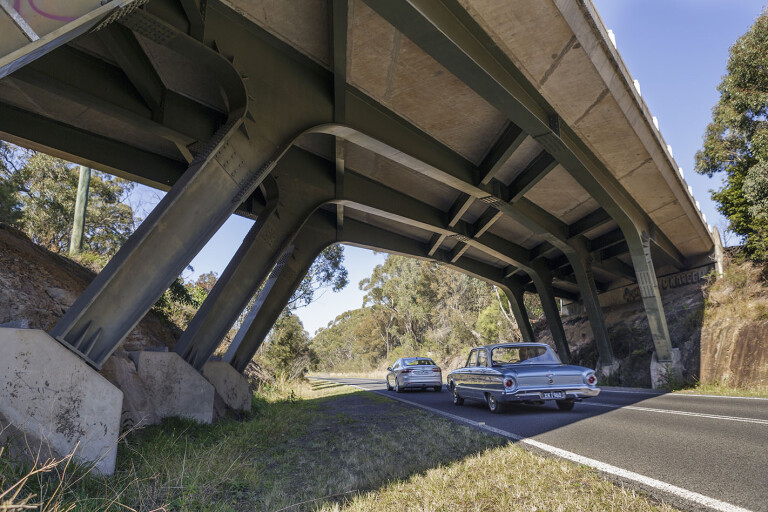
FROM the XL Falcon through to the XM in 1964, by which time they’d fixed most of the early durability problems, Australia was still a far more dangerous place than today’s cruise-controlled Hume Freeway.
At my school in Albury, there were kids in leg calipers, victims of polio. You’d line up for your Mantoux test to see if you’d been exposed to tuberculosis. And if you survived all that and the Commies didn’t get you, then the curdled milk in the little glass bottles at play lunch would surely finish the job.
If that all sounds a bit Four Yorkshiremen, well, Australia was a very different country then.
Ford built cars other than the Falcon, of course.
On Parramatta Road at Homebush, not far from the northern end of Highway 31, they shut up shop in 1994. Today, the elegant old art deco building is a business park and HQ to the importers of Peugeot and Citroen, with Kia and Nissan facilities on the same campus. This is ironic in the old, non-millennial sense of the word. For when the XK arrived in 1960, fewer than 1 in 10 cars were imports. Soon enough it will be 10 out of 10.
What happened in between is a complicated story of the Falcon’s relationship with Australia. The guts of it is that the big Ford, once analogous to the Aussie identity, isn’t relevant any more. Those are tough words to write but they are hard to argue.
Like us and Highway 31, the Falcon has changed radically over 56 years, becoming infinitely more sophisticated, outward-looking and better in every way, after decades of local engineering and development.
_web.jpg )
But Australia’s tastes changed, our choices expanded, the world turned faster than the big, rear-drive, lazy-engined legacy could evolve.
At the peak of its powers the Falcon was (past tense) big, tough and a bit rough around the edges, but strong, dependable, reliable. Much like ’Straya in the late 1960s and ’70s. Honest as the day is long, but blokey, a bit naive and gauche.
RSL Clubs, red dirt roads, steak and chips, the main street of any country town, certified Golden Quality. Bottler mate!
But just as we went from 43 beans to barista-blended lattes, so this big, bluff grunter with the ’uge boot struggled mightily to transform into something better, something other than more metal for the money and the clichéd big car for a big country stuff.
For much if its life it was all things to all people. Company car, family car, racecar and lusty hoonmobile. This is remarkable, and unique in the true sense of that word. Falcon Is The Answer, the slogan said. The question didn’t matter.
By the time the XR arrived – ‘Mustang- bred’ said Ford, with truth stretched to breaking point – it was giving Holden a fair run for its money.
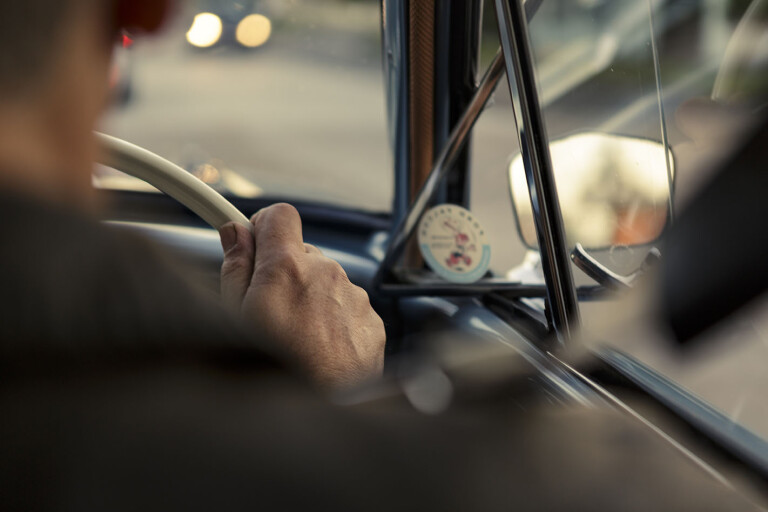
NEAR Marulan, still there if you look hard enough, is an incredibly narrow ribbon of concrete, just 6.1 metres wide, whose expansion joints made any car sound like a locomotive. Ca-thumpa-thumpa, ca-thumpa-thumpa. The concrete was laid in 1938 using the same technology as Hitler’s authobahns. Hard to believe, it was still part of the Hume in the late ’60s.
Flashback to a laden Leyland pantech coming the other way. It was as bum-puckering as crossing the Prince Alfred Bridge in Gundagai, wooden planks rippling and clunking with a semi passing inches away in the opposite direction.
The truckies had names for every bit of road on the old Hume. Turkey Town, Steps and Chairs, Carbon Black, Biscuit Bridge, Three Legs O Man, Sydney Harbour Bridge, Pretty Sally, Manse Hill, Customline Corner, the Mad Mile.
That last one was on the Wodonga side of the Murray River just past the Fruit Fly inspection station. As a kid I always wondered how the fruit flies knew exactly where they were supposed to cross the state border.
Yet the name that instilled the most fear was a place called Sylvias Gap, the most dangerous few miles in Australia, bar none. Now on privately owned land, it’s a place of ghosts, rusting wreckage and the faint echoes of downshifting gears and air brakes. Seven fatal accidents in a single two-week period during 1981 took place between its sheer rock walls. Usually, head on. The truckies feared it.
Now eerily silent and empty, it’s hard to believe this was the main artery between Australia’s biggest cities well into the 1980s.
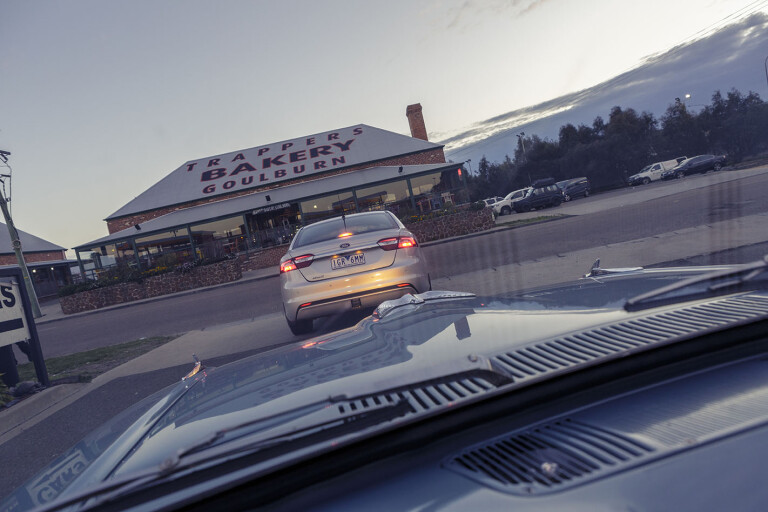
ITS notoriety spanned the decades when Moffat, Bathurst, the mighty GT-HO, Superoo, SuperPursuit, Dick and The Rock, Tickford, the letters 351 and slogans like Trim, Taut & Terrific became embedded Aussie shorthand from the heyday of the Falcon.
Great as it was, though, here’s the thing. People weren’t given the choice to buy anything but Aussie-made – unless they paid through the nose – for the first 25 or more years of the Falcon’s life.
Motoring writers often talk about “the car industry”. Well, the 80:20 rule (where 80 percent of the market was reserved for Australian producers and 20 percent for imports) was the reason we had one.
The government mandated we couldn’t have freedom of choice and imposed volume quotas on foreign-built cars, tariffs as high as 57.5 percent and sales tax as well, which hit a high point of 40 percent, as the rubber hit the road on the XK.
The upside was jobs, skills, the ability for Australia to make stuff, and a brake on the country’s balance of payments. The downside was it took the average punter 67 weekly pay packets to buy a Falcon in the early 1960s. Today it is much less than half that and what you buy is better equipped, safer and of much better quality. The difference is that import tariffs have tumbled to a token level, our market is open to all-comers and a 10 percent GST rate is better than any sales tax. Given freedom of choice, we have shown how much we really care about The Car Industry.
I remember being asked to give a speech to Ford’s execs at Broadmeadows in the early 1990s. Tellingly, most of them didn’t regard the rise of Korea as a threat. Maybe they were channeling Henry Ford’s “history is bunk” thinking, but here was déjà vu all over again, as they say.
In 1963 Japanese cars accounted for 1.3 percent of Australian registrations; just 4300 of them. By 1968 it was well over 50,000. Ford boss Bill Bourke declared “no Japanese cars in RSL car parks”. But the jig was up.
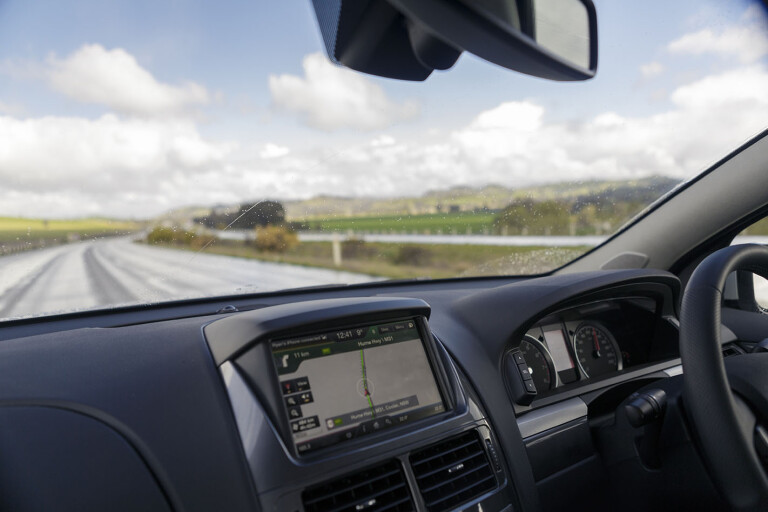
Decades later, incoming Ford Australia boss Jac Nasser knew he had a problem, and not just with the rise of Korea, even if his team did not. He predicted what would happen in his very first press conference. The gist: There won’t be two or three dominant players anymore; market shares will shrink and the field will even up; imports would flood in because the government was withdrawing the protection racket. Nasser slashed Ford jobs, earning himself the nickname Jac The Knife, which he hates to this day, and for which I still get the blame.
A lot of the Ford faithful still can’t come to grips with that period, but it was the beginning of the sharp end of The Button Plan, which was designed to create an open car market for the first time.
Hidden behind the old tariff and quota wall, fleet-car culture was both the Falcon’s lifeblood and its fatal flaw. It was the driving force behind its success, including market leadership for the first time in 1982.
The simple stat is that 8 out of 10 Falcons were sold not to mums and dads but to corporations and governments. And those guys knew how to sharpen a pencil. The fleet emphasis permeated every decision the Ford brass made. Independent rear suspension, overhead cams and four valves per cylinder, even the arrival of a four-speed auto were all belated.
The fleet buyers at Australia Post, or Rothmans, never asked for that stuff. They wanted a price for a set volume. The Falcon wagon’s biggest customer was Telecom, whose tender document specified a cargo area uncannily similar to that Ford eventually built.
The metric was all about volume and economies of scale. Ford could make dough on 100,000 cars a year, a piddling amount by world standards.
The Australians did more with less to keep the economics in balance, but whenever big investment was required – like a new paint shop or a modern plastics plant – it was a battle to get the money.
It was why Wheels’ publication of its Quality Rankings in 1990 caused such a stir, even in Federal Parliament, where the minister agreed with our findings. Australian-made Commodores and Falcons, we said, were at the bottom of the Top 20 for quality.
Some great engineers and designers performed miracles with skinny resources to lift the Falcon from the bottom tier.
To this day, Edsel Ford still believes Wheels’ famous Lemon cover of March 1980, which withheld the award the year he thought the Falcon XD was a shoo-in, was all about selling magazines. Peter Robinson’s gutsy decision was the opposite of that. He would have sold a lot more magazines if he’d rolled over and given the gong to the XD range. Not until the BA won COTY in 2002 was all forgiven.
In the years between, Australia had urbanised ever faster. It globalised so rapidly from the late 1980s that the Falcon couldn’t keep pace. It needed volume. It needed a fair dinkum export market where its space, durability and toughness would be appreciated. Instead Ford went with the Capri, the total opposite, and an abject failure as it turned out.
In terms of technology, quality, and image, the Falcon was in catch-up mode.
The AU was the nadir. A perfectly good Steve Park design was binned at the insistence of Dearborn for a disastrous Taurus-like New Edge design. That’s what Ford called it. The punters thought it droopy-arsed and buck-toothed.
With fleets at the forefront of its thinking, Broadmeadows misread the pace of change. Underneath, the AU had too much carryover, too little refinement for a new century. It was the pivot point for the Falcon, a time when momentum and image were squandered.
Here’s what I wrote for the Sydney Morning Herald the day it was launched: “Ford’s new Falcon sets only one record on the international stage. It is the biggest, most powerful car that $29,990 devalued Aussie dollars can buy. This 87-percent dinky-di Falcon, with its Geelong-made engines and its BHP steel body, is probably the most metal for the least cash available anywhere in the world. But in a car market now dominated by imports, will this be enough?”
In retrospect it was a legacy formula whose time had come. Like the battleship, the Falcon was fighting the last war. Despite a spirited comeback with the COTY-winning BA in 2002, the reprieve proved only temporary.
Some 56 years and 3.8 million cars later, it’s time to say goodbye. It was a good run, but in the end production petered out to fewer than 7000 Falcons in 2016.
Thoughts turn to the ‘if onlys’… If only Ford could have hit the fast-forward button and skipped a generation. If only the current car was released in the early noughties, this story may have had a different ending.
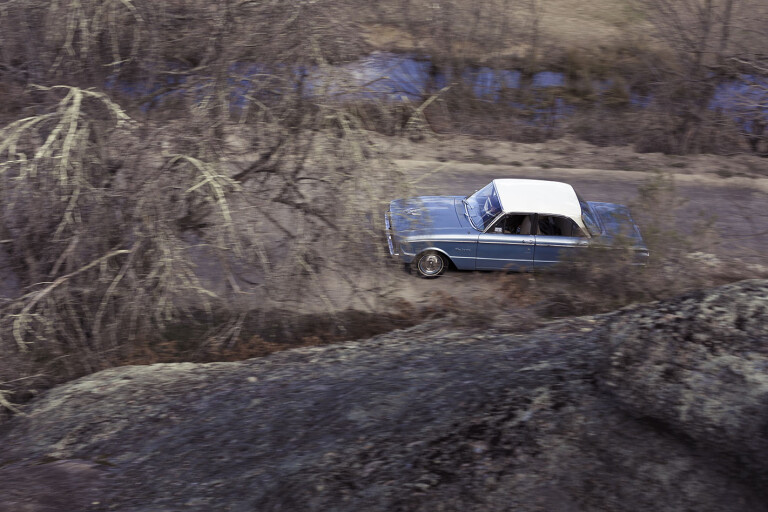
IT is a remarkable thing, this big 2016 Ford. From the first turn of the oh-so-familiar Falcon starter motor, it reeks of a refinement missing from previous iterations.
The door seals, the paint, the panel fit and the plastics are all a big leap forward on the cars of the ’90s. Cabin finish and attention to detail have come such a long way. The thing is so quiet and well insulated without losing the old virtues of space, boot size and comfort. On the Hume, the loping gait makes long-distance travel so easy. On the old road, it points and handles with reassuring accuracy, but maybe not quite as well as my old 2008 E-Class Benz.
The two share front engines, rear drive and what used to be called E-category dimensions. Big cars. The Falcon has more and better rear-seat room, a more practical boot and similar levels of noise, vibration and harshness.
That said, my old farm taxi is a diesel and if there is a criticism it’s the grandpa’s axe under the Falcon’s bonnet. Miracles have been achieved with fuel consumption, emissions and throttle response, but it’s still a big-bore in-line six and no matter how much lipstick is applied, the harmonic signature and ability to spin are, like the laws of physics, immutable.
Driving it after stepping out of the XK makes you realise all that has been gained but also what has been lost. Like the Hume Freeway has seduced us with its comfort and convenience, the last Falcon feels relatively numb compared with its ancestor. Connectivity of driver to road is nowhere near as direct, even though velocity might be twice as fast.
A cocoon versus a machine, with the latter making the driver aware of all its moving bits.
Pondering all this, the issue is not so much specifics. The G6E is a well-made, easy-to-drive car. It is just the wrong sort of car. Big three-box rear-drivers with large-capacity engines are a dying breed around the world, relegated to the niches, replaced by the ubiquity of the SUV for those wanting space, lungfuls of power and, at the heavy-duty end at least, the confidence to go on roads less travelled.
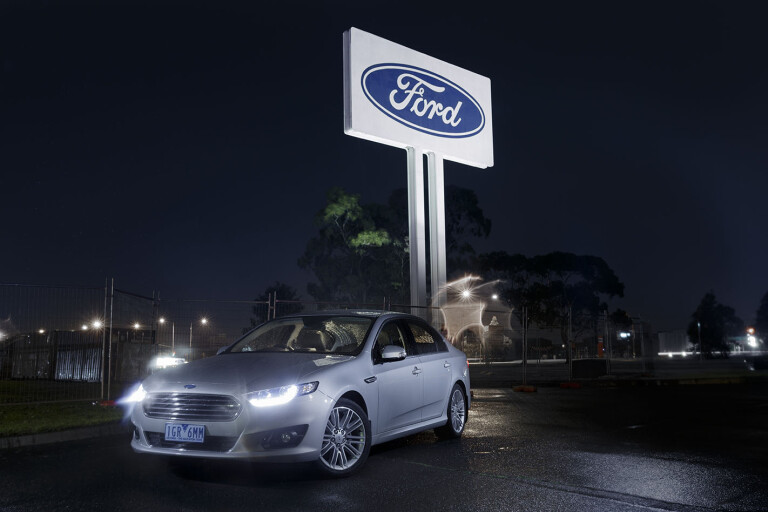
Falcon is no longer the answer because the question has changed.
Ironically, the decision to call it quits was made around the same time the Hume opened the final bypass at Holbrook, the last link that would make it a continuous freeway linking Sydney and Melbourne.
So at journey’s end, at the entrance to our southern city, the Ford sign towers at the edge of the highway, in front of that blunt Broadmeadows HQ, scowling down at the Hume and yearning for the glory days.
Time to pause and reflect, then, on who killed the Falcon. The truth is, you did. I did. We all did… by buying something more relevant to the Australia of 2016. But while it lasted it was one hell of a ride.

COMMENTS